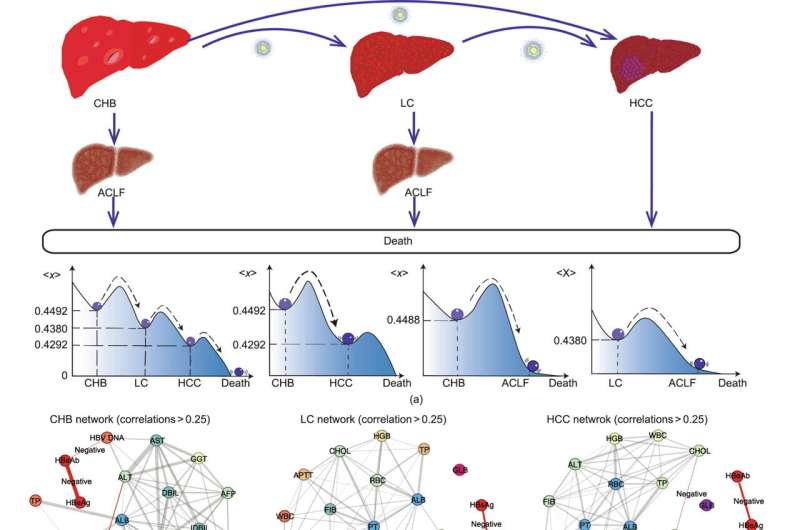This article has been reviewed according to Science X's editorial process and policies. Editors have highlighted the following attributes while ensuring the content's credibility:
fact-checked
proofread
Study proposes a resilience approach for accurate diagnosis of HBV-related diseases through blood tests

Chronic hepatitis B virus (HBV) infection poses a significant threat to global public health, contributing to liver-related morbidity and mortality. The current diagnostic methods for HBV-related diseases, such as laboratory tests, ultrasounds, computed tomography (CT), and liver biopsies, often overlap and consume valuable medical resources. In response to this challenge, a team of researchers have developed an innovative and cost-effective method to diagnose and predict HBV-related diseases based on blood tests.
In a research article published in the journal Engineering, titled "A Resilience Approach for Diagnosing and Predicting HBV-Related Diseases Based on Blood Tests," scientists introduce a novel measure called functional resilience.
By constructing complex network models using clinical blood tests, the researchers have successfully assessed the liver conditions of patients with chronic HBV infection. Their approach combines network models and dynamics to identify pivotal indicators and corresponding thresholds, enabling early detection and prevention of disease deterioration.
The research team achieved an impressive macro-averaged precision of 84.74% using their method, functional resilience. In comparison, physicians relying solely on their experience, without assistance from imaging or biopsy, achieved a macro-averaged precision of 55.64%. From an economic standpoint, this approach has the potential to save at least 30 USD per visit for most Chinese patients and 400 USD for most US patients, compared to traditional diagnostic methods. Globally, the estimated annual savings could surpass 10.5 billion USD.
By comprehensively evaluating the condition of patients' livers, this innovative diagnostic method reduces the need for excessive imaging exams, thus optimizing the use of medical resources during the diagnosis of liver diseases. The research findings provide a significant contribution to the field of HBV-related disease prevention and management.
The study's conclusions shed light on the liver function status of patients with chronic hepatitis B (CHB), liver cirrhosis (LC), and hepatocellular carcinoma (HCC) from a network perspective. By constructing networks based on 25 blood test items, the researchers analyzed the evolution dynamics of liver function and identified pivotal indications and related thresholds for critical states between CHB, LC, and HCC. This discovery has profound implications for future HBV-related disease-prevention research, offering insights into the early warning signs of liver function deterioration.
The research team's simulation of the progressive liver dysfunction caused by chronic HBV infection through the deletion or alteration of network links provides valuable insights into the transition between states. While the morphology of the liver in a critical state remains unknown, these findings inspire future research and pave the way for improved diagnosis, prevention, and treatment strategies.
The impact of this research extends beyond scientific and medical communities, as it addresses a pressing global health issue. By streamlining the diagnosis process and reducing medical costs, this novel approach has the potential to transform the lives of millions of patients affected by HBV-related diseases worldwide.
More information: Gege Hou et al, A Resilience Approach for Diagnosing and Predicting HBV-Related Diseases based on Blood Tests, Engineering (2023). DOI: 10.1016/j.eng.2023.06.013




















